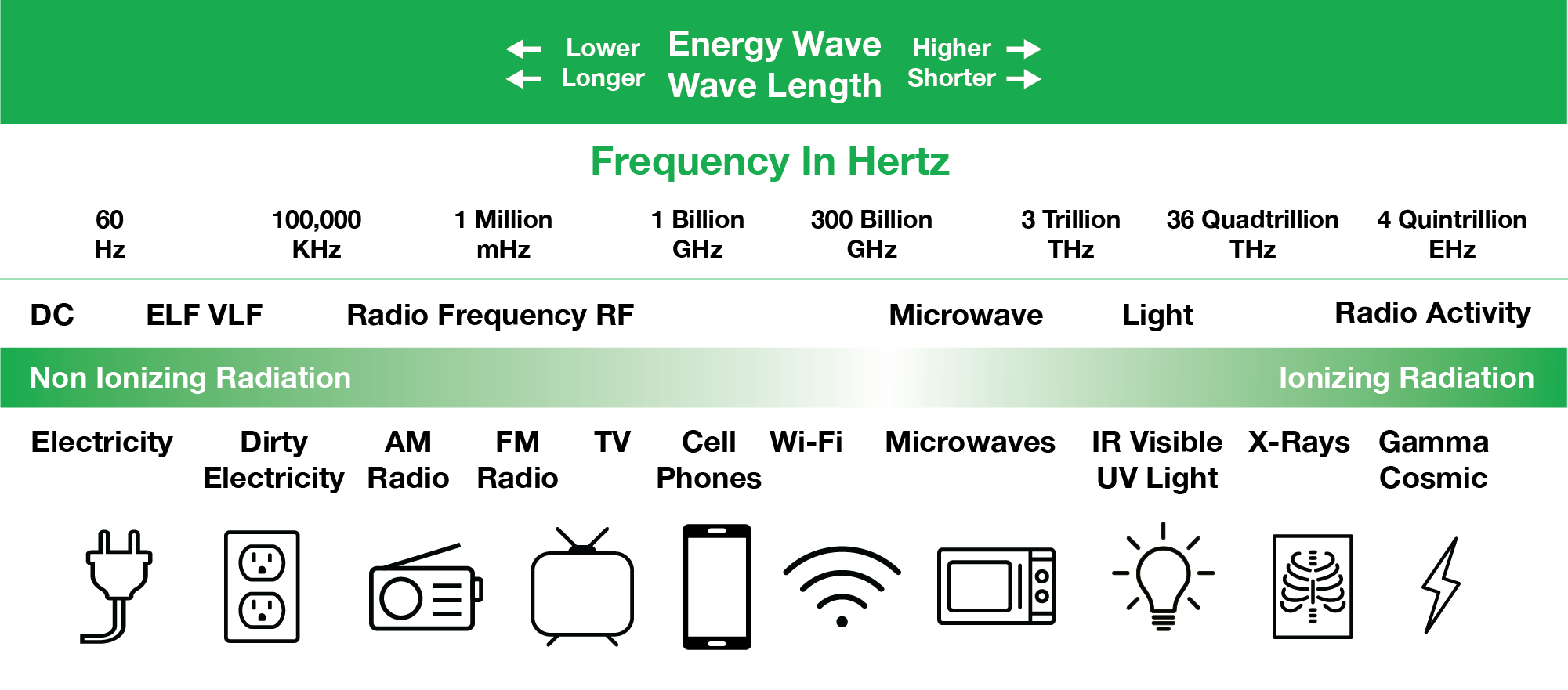Electromagnetic Spectrum
The electromagnetic spectrum (commonly referred to as the EM spectrum) is the complete range of all known frequencies and wavelengths of electromagnetic radiation. This type of radiation travels in waves and consists of oscillating electric and magnetic fields that propagate through space. A unique characteristic of electromagnetic radiation is that it does not require a physical medium to travel, which is why it can move freely through the vacuum of outer space. This ability allows radiation from the Sun, for example, to reach Earth and support life by delivering both light and heat.

[Click to Download - Electromagnetic Spectrum PDF]
What Is the Electromagnetic Spectrum?
The EM spectrum is organized into seven major regions, listed in order of decreasing wavelength and increasing frequency and energy: radio waves, microwaves, infrared radiation, visible light, ultraviolet radiation, X-rays, and gamma rays. Each of these regions represents a different class of electromagnetic wave, with distinct properties and real-world applications.
From ELF To Gamma Rays: The Full Range of Electromagnetic Radiation
At the lowest-frequency end of the spectrum is extremely low frequency (ELF) radiation, which includes very long-wavelength waves emitted by power lines, electrical grids, and other sources related to energy transmission and infrastructure. These waves can span thousands of kilometers. As one moves up the spectrum toward gamma rays, the wavelengths become progressively shorter, and the frequency and energy of the waves increase substantially.
Understanding Wavelength, Frequency, And Energy
A key physical principle of electromagnetic radiation is the inverse relationship between wavelength and frequency. In other words, the longer the wavelength, the lower the frequency, and the shorter the wavelength, the higher the frequency. For example, radio waves can have wavelengths measuring several kilometers, while gamma rays have wavelengths smaller than the width of an atomic nucleus. Frequency is also directly linked to energy — high-frequency waves carry much more energy and therefore have a greater potential to interact with or penetrate matter.
 Ionizing Vs. Non-Ionizing Radiation: What’s The Difference?
Ionizing Vs. Non-Ionizing Radiation: What’s The Difference?
The electromagnetic spectrum is broadly divided into two categories: ionizing radiation and non-ionizing radiation. Ionizing radiation includes the high-energy part of the spectrum — ultraviolet light, X-rays, and gamma rays. These waves have enough energy to remove tightly bound electrons from atoms, which can disrupt molecular structures and potentially lead to biological damage, including DNA mutations. On the other hand, non-ionizing radiation includes radio waves, microwaves, infrared, and visible light. While these lower-energy waves do not ionize atoms, they can still interact with biological tissues, especially during long-term or intense exposure.
Real-World Applications Of The EM Spectrum
Understanding the EM spectrum is essential because the various types of EM radiation are used in countless modern technologies and everyday applications. Radio waves are essential for broadcasting, television, and cellular communication. Microwaves are used not only in household appliances, but also in satellite communications and radar systems. Infrared radiation plays a key role in remote sensing, night vision, and thermal imaging. Visible light is, of course, what the human eye can perceive. Ultraviolet rays are commonly used for disinfection and sterilization, while X-rays are widely applied in medical imaging, and gamma rays are used in cancer therapy and advanced scientific research.
 Natural And Man-Made Sources Of Electromagnetic Fields (EMFs)
Natural And Man-Made Sources Of Electromagnetic Fields (EMFs)
Electromagnetic fields (EMFs) can originate from both natural sources — like sunlight, lightning, and the Earth’s magnetic field — and man-made sources, including cell phones, Wi-Fi routers, smart meters, high-voltage power lines, and wireless communication networks. Increasingly, studies have shown that biological effects may occur across the entire spectrum, not only within the ionizing region, highlighting the importance of awareness and responsible technology use.
Protecting Your Health From EMF Exposure
At Safe Living Technologies, we specialize in identifying, measuring, and mitigating EMF exposure in both residential and commercial environments. We provide in-depth EMF consultations, and customized solutions tailored to your specific situation. Whether you are concerned about long-term health effects or simply seeking peace of mind, our services help individuals, families, and organizations create safer, healthier living spaces by reducing unnecessary EMF exposure.
References
Blank, M. Overpowered: What Science Tells Us About The Dangers of Cell Phones and Other WiFi-Age Devices. Seven Stories Press, 2014.
LiveScience. “What is Electromagnetic Radiation?” 2015. https://www.livescience.com/38169-electromagnetism.html

